Full Guide To Red Aventurine vs. Strawberry Quartz (This Is The Difference)

In order to work with our crystals effectively, we need to understand their properties. With crystals that look similar or have similar uses, such as red aventurine and strawberry quartz, it can be difficult to determine which one to work with. The answer should always be; the one that you are drawn to the most. However, if you are looking to find the difference in physical appearance as well as metaphysical properties, you’ll find your answer here.
Red aventurine and strawberry quartz are basically the same stone, with almost the same chemical composition. The only real difference is that red aventurine is more vibrant in color than strawberry quartz, which is paler. This difference is determined by the amount of hematite and/or goethite inside the stone.
Because there is a slight difference in the amount of hematite and thus color, this change also translates to a difference in metaphysical properties.
Continue reading if you want to know more about the (physical) qualities of these stones, as well as how you can use them in your spiritual practice.
Also read: Aventurine vs. Amazonite – What’s The Difference?
Want more help or information? If you have any more questions after reading this blog post or want a personal answer for your specific situation, join the free Facebook group! We promise you’ll get an answer from either our team members or a community member.
Red Aventurine vs. Strawberry Quartz – How To Tell The Difference?
In order to understand the difference between these two stones, we can look at the color, shape, pattern, clarity, and more. Below we’ll describe all these aspects in detail.
Color
Red aventurine is a type of quartz containing goethite, or hematite, and mica in its composition. The traces of hematite and goethite give the stone its red color. Note that the color intensity of red aventurine varies throughout the stone. If you see a stone marked as red aventurine, with the same color all over, it is likely fake.
Additionally, the mica mineral content found in the stone is what gives this stone its ‘aventurescence’, which is the glittery effect associated with aventurine. These are generally very small flakes. Again, any stone with larger flakes, round specs, or none at all is probably fake.
Strawberry quartz gets its name from its color, which resembles red strawberries. This stone may also be named hematite quartz or red quartz. The color ranges from light to dark pink and may also contain white, black, or brownish markings within the stone. Strawberry quartz will also have the same glittery effect as red aventurine.
Beware that very often, glass or dyed crystals are sold as strawberry quartz. The reason for this is that strawberry quartz is very rare. Spot a fake the same way as you would for red aventurine (as described above) – look at the color intensity and the aventurescence.
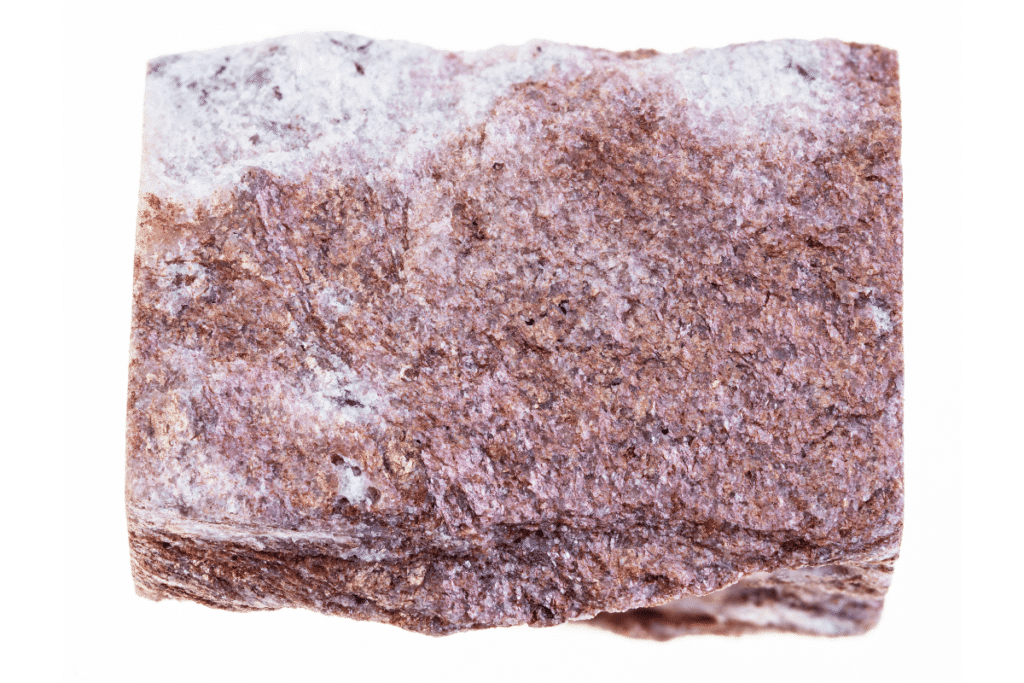

Chemical Composition
As said, both crystals have the same chemical makeup, with a slight difference in the amount of hematite or goethite in it.
Both strawberry quartz and red aventurine are silicate minerals blended with silicon dioxide and hematite.
They are both very similar to rose quartz, but rose quartz does not have the same glittery effect and does not contain the same amount of iron oxide and goethite in its chemical composition. This gives strawberry quartz and aventurine a darker hue. Thus, although all three of these stones are quartz, rose quartz is the lightest, and red aventurine the darkest. Strawberry quartz falls right in the middle.
Pattern and Clarity
Strawberry quartz and red aventurine are both translucent with a vitreous luster. This simply means they shine the same way that glass does and are slightly see-through.
As a result of the mica in these stones, they also have a glittery effect.
Lastly, strawberry quartz and aventurine have none (or almost no, depending on the stone) cleavage. This means that when they break, they do not follow any natural lines. Instead, they break haphazardly.
Location
Red aventurine crystals are found in Europe, Brazil, India, and Tanzania.
Strawberry quartz was first found in Mexico. This stone can also be found al over the world, like Russia, Morocco, and Brazil. They can also be found in amethyst mines as a secondary mineral.
Also read: Calcite vs. Quartz – What Is The Difference?
Hardness
Both stones are relatively hard, although red aventurine is slightly less hard compared to strawberry quartz. A red aventurine rates 6, while the strawberry quartz rates 7 on the Mohs scale of hardness.
If you’re unfamiliar, the Mohs scale of hardness determines a stone’s hardness by measuring how scratch-resistant it is. According to this scale, a stone can scratch any other mineral with a lower score. For reference, talc is a 1, whereas diamond is a 10. In our example, strawberry quartz could scratch red aventurine.
As a result of this hardness, strawberry quartz is slightly more durable and scratch-resistant compared to red aventurine.
Care
Just like any other crystal or gemstone, you probably want to clean these every once in a while.
As a result of their hardness, these stones aren’t damaged by water, so it is entirely possible to remove any accumulated dust by running them under water or wiping them with a damp cloth. You could also use a little gentle soap if you wish.
However, we never recommend soaking any mineral in water over extended periods of time, as these will eventually turn a stone brittle or dull. Luckily, a quick rinse won’t hurt them.
Let’s also talk about how to energetically cleanse and recharge these stones. Just like any other crystals, they are likely to absorb negative energy. In order to continue working with them effectively, it’s beneficial to rid them of this energy regularly, as well as refill them with positive ones.
Cleansing, again, can be done by rinsing these stones under running water. You could also bury them in the ground or brown rice for 24 hours.
Recharging can be done by leaving them on selenite or clear quartz for 24 hours, smoke cleansing, or leaving them under the light of a full moon for a night. We do not recommend sunlight, as this could potentially cause the stone to fade.
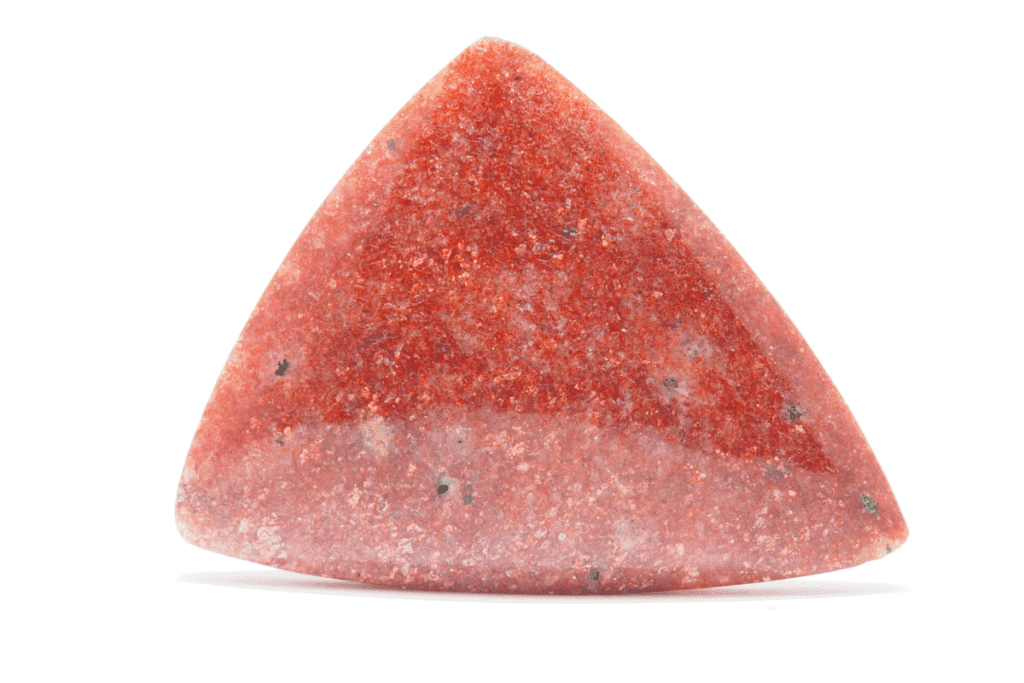
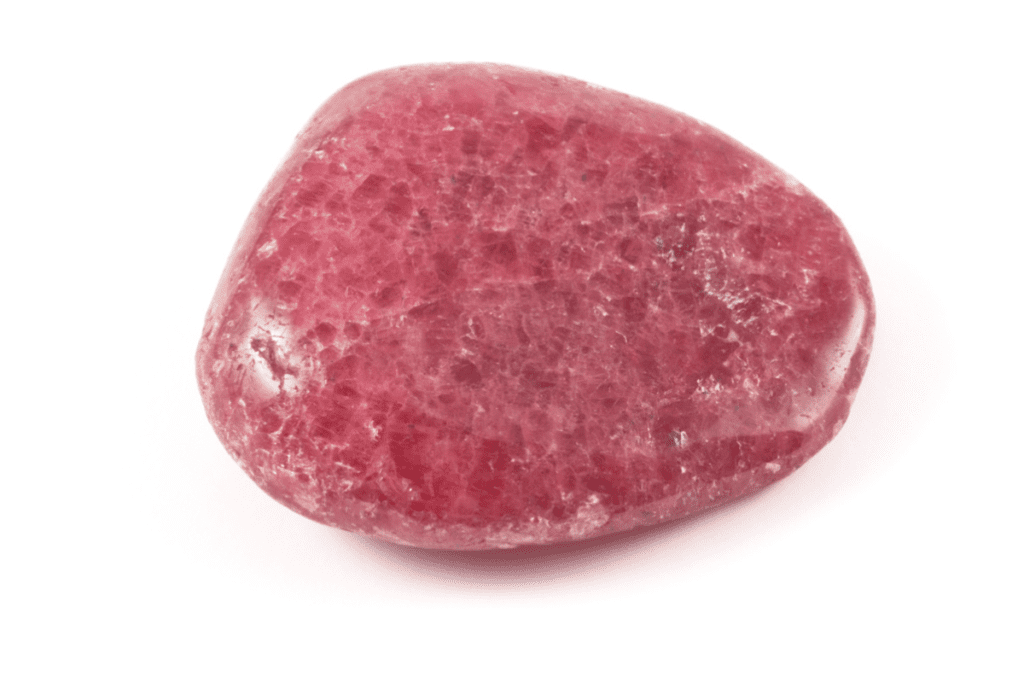
Properties
Now that we know what stone we are working with, we can have a look at the metaphysical properties of both red aventurine and strawberry quartz. As mentioned, they are very similar, and will thus have very similar properties too.
Beware that crystals are never a replacement for professional medical help. If you have any issues, see a doctor first.
Physical Healing Properties
Both stones are believed to not only have a positive effect on mental issues but also on physical ones. For red aventurine, we generally associate these with issues with the metabolism and autoimmune system. The stone is also used in nervous system-related illnesses and balancing hormones.
For strawberry quartz, we can think of eliminating back pains, strengthening muscles, and supporting the immune system.
Also read: Amethyst and Rose Quartz – Combination for Anxiety and Love
Metaphysical Properties
In addition to these physical healing properties, we can also use these stones to help us mentally or emotionally.
Red aventurine is a crystal that can help boost your mood, dispel negative energy, and improve mental clarity. Overall, it will just give an extra bit of motivation and confidence.
If you find yourself a little distracted or have a block in your creativity, this stone can help you too. As red aventurine has more hematite in its composition, we also consider this a more grounding stone.
Strawberry quartz has very similar properties to rose quartz and is therefore associated with all things self-love and trust.
Ancient lore
As you might know, crystals and gemstones have been used for centuries for their healing powers.
For example, red aventurine was used by ancient Tibetans when creating the eyes in statues, as this was said to increase visionary power. Additionally, several other societies used this stone for medical rituals to show the connection between healing and the spiritual realms. On the other hand, strawberry quartz was believed to be Ceridwen’s favorite stone. Ceridwen is the goddess of wisdom and knowledge, and wearing strawberry quartz is believed to pass these qualities to you.
Talismans and Amulets
The two can be used as luck and talismans for protection. Red aventurine as a talisman will align your energies towards achieving your dreams and discovering new capabilities. Red aventurine is therefore a good amulet for researchers, scientists, and explorers.
On the other hand, strawberry quartz used as a talisman will cleanse your aura and awaken your spirit. Its connection to the earth element will be excellent for growth.
Chakra Association
Both stones are associated with the heart and root chakra. However, red aventurine generally leans more to the root chakra as a result of its redder color, whereas strawberry quartz is more associated with the heart chakra as a result of its more pink color. Still, you could use either stone to work with both of these chakras.
Simply put, chakras are the different energy points in our body. There are 7, each of them linked to a certain aspect of our lives. We can link each chakra to crystals or gemstones by looking at their color.
- Root chakra (Muladhara)- is represented by black/red and is located at the base of the spine. This chakra is related to stability.
- Sacral Chakra (Svadihsthana/ spleen)- is represented by orange and is located below the navel. The sacral chakra is associated with feelings.
- Solar Plexus Chakra (Manipura)- is represented by yellow and is located above the naval. The solar plexus chakra is related to intellect.
- Heart Chakra (Anahata)- is represented by green/pink and is located in the chest area. This chakra is associated with loving and emotional healing.
- Throat Chakra (Vishuddha)- Is represented by blue and is located at the end of the throat. This chakra is associated with communication and tangible dialogues.
- Third Eye Chakra (Ajna)- Is represented by indigo and is located between the eyebrows. The chakra is related to spiritual understanding.
- Crown Chakra (Sahasrara) is represented by white and is seen as our connection to the divine.
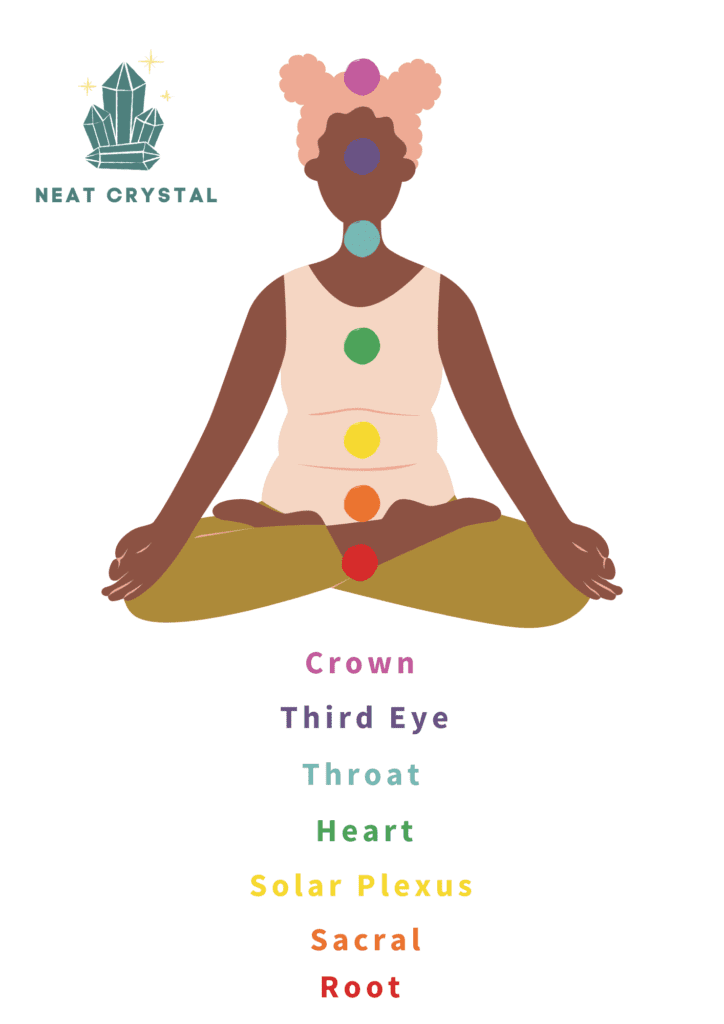
Also read: Pink Amethyst vs. Rose quartz – What’s the Difference?
Numerical Vibration
Red aventurines vibrate at 3, while strawberry quartz vibrates at 5.
Number 5 in numerology is associated with our feelings and emotions. This number is also associated with Mercury, the planet of knowledge and intuition. People who resonate with the number 5 are fun-loving, curious, and adaptive to different environments. Some of their weaknesses are unreliability and lack of commitment.
Number 3, on the other hand, is an omen for creativity and communication. People who resonate with this number are optimistic and solution-oriented. Number 3s make good mentors to others.
Zodiac Signs & Birthstones
We can determine which stones to work with by looking at which zodiac signs they are associated with.
Neither red aventurine nor strawberry quartz is considered a birthstone. However, they are both associated with Venus, the planet of love and prosperity, and thus Taurus and Libra. Working with either of these stones will help these signs to bring out the best in them, whilst working through the difficulties associated with their signs.
In addition, both stones are generally very beneficial to Virgo and Aries
People under Virgo are considered reliable and loyal. However, a Virgo may also be obsessive with perfection and detail. Red aventurine and strawberry quartz help Virgo express their creativity through better communication and systematic approaches.
People under the Aries banner can also benefit from red aventurine and strawberry quartz. Aries people value their independence and are also known to be ambitious. These stones help the zodiac to maintain focus and mental clarity to reach its goals.




Elements
A red aventurine utilizes both earth and fire energies, while the strawberry quartz utilizes the energies of the earth.
We can determine the associated element by looking at a crystal’s or gemstone’s properties. The reason red aventurine and strawberry quartz are associated with their elements are as follows.
Earth is the source of life and the basis for building all other elements. Crystals connected to mother earth will bring prosperity, rebirth, and ground energies.
On the other hand, the fire element signifies strength and transformation. Crystals of the fire element will be influential in healing and protection. The stones can also be used for purification and rekindling your creative spark.


Best Combinations
By combining our stones well, we can help strengthen their properties. There are many possible combinations, but below we’ll discuss some of the most interesting ones:
- Red aventurine paired with zincite or yellow apatite activates and balances the energies on the solar plexus chakra.
- Red aventurine with turquoise or malachite will help with meditation, manifestation, and healing.
- Strawberry quartz can be paired with clear and/or rose quartz, especially in jewelry, to amplify healing energies.
- Selenite and strawberry quartz are good is emotional healing.
- Either strawberry quartz or red aventurine combined with other pink or green crystals are perfect for rebalancing the heart chakra.
Also read: Selenite vs. Clear Quartz – What’s the Difference?
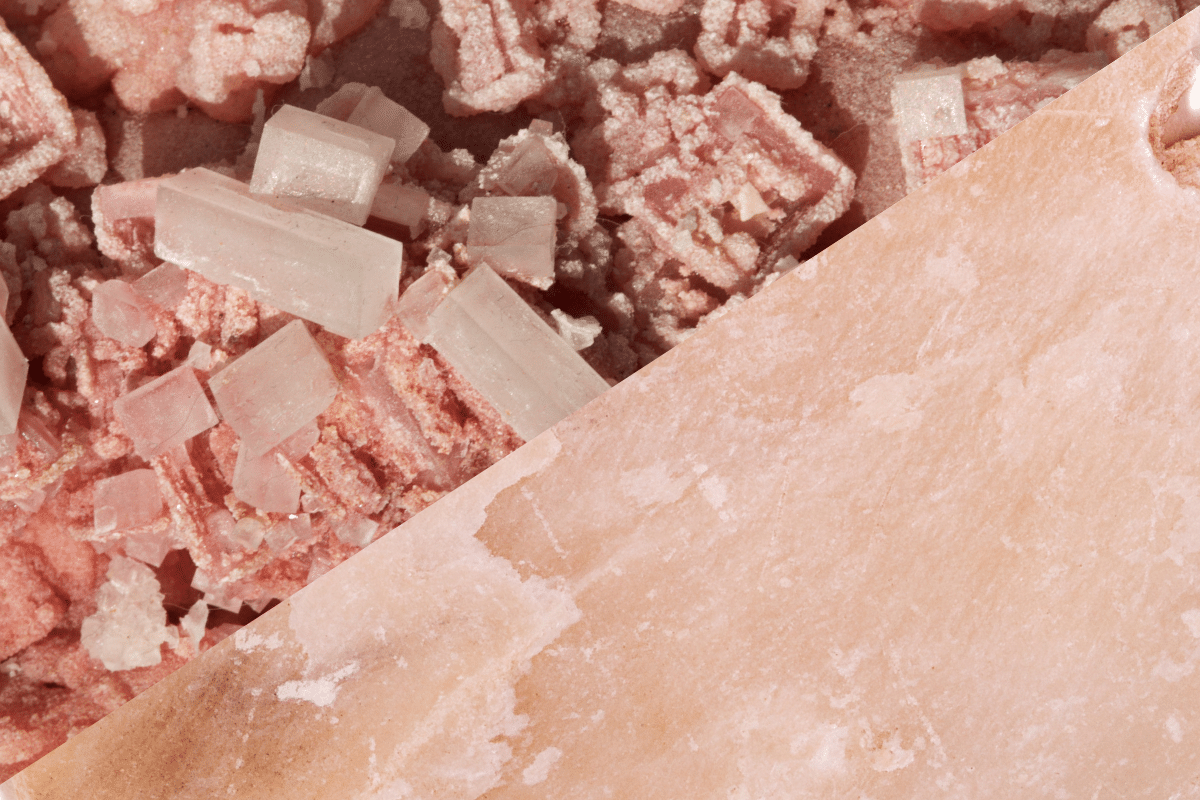


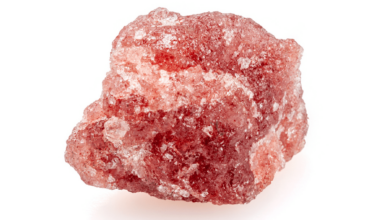
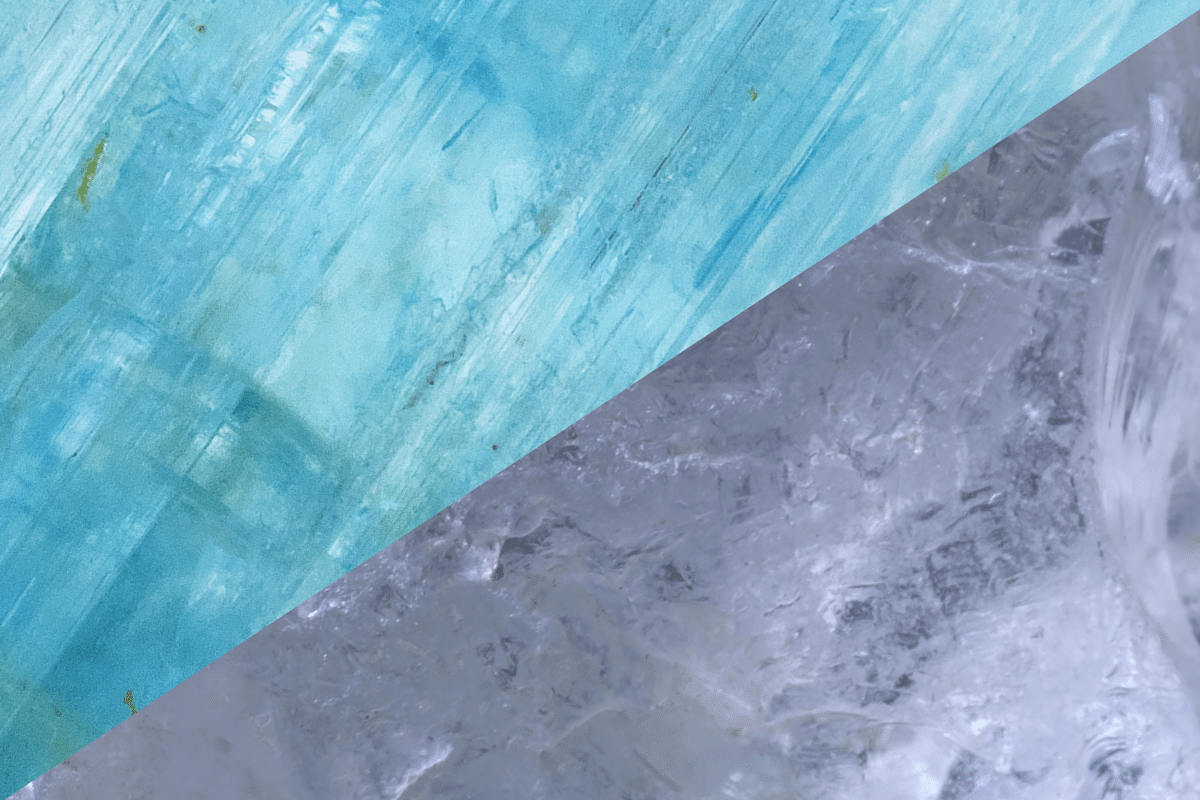

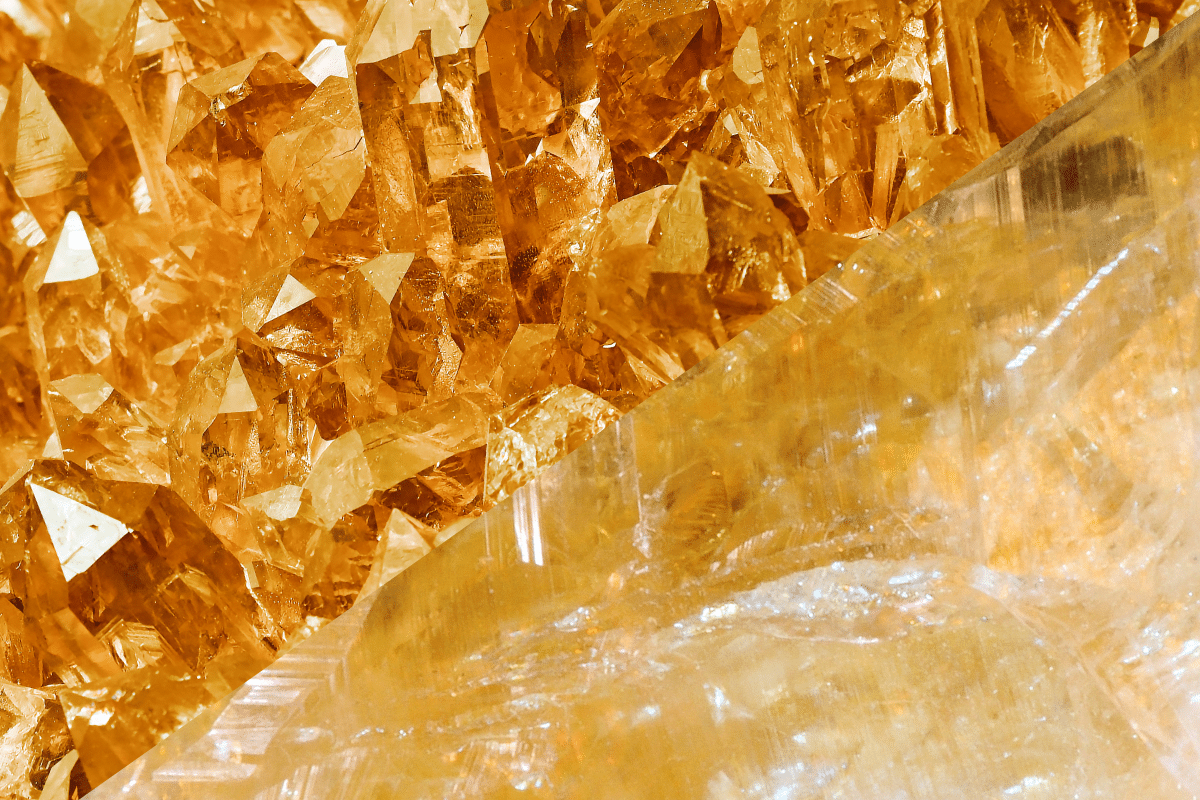
4 Comments